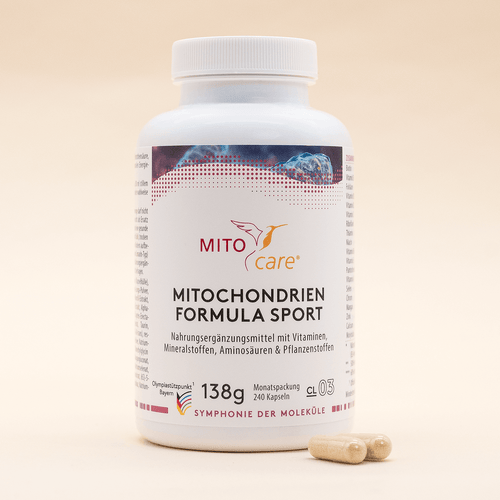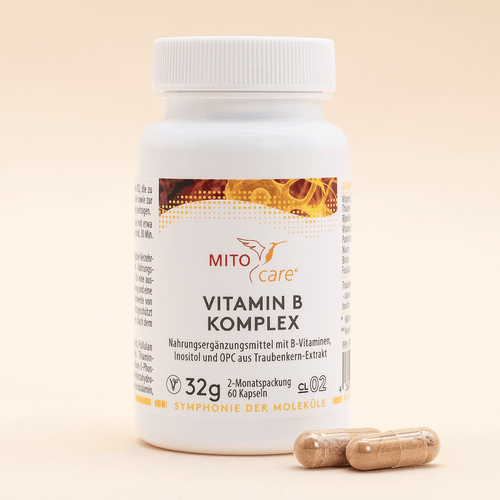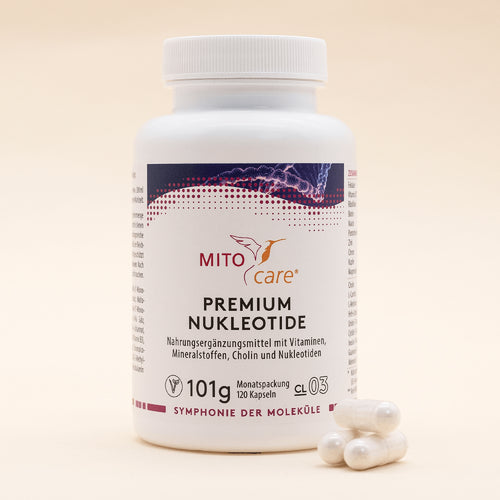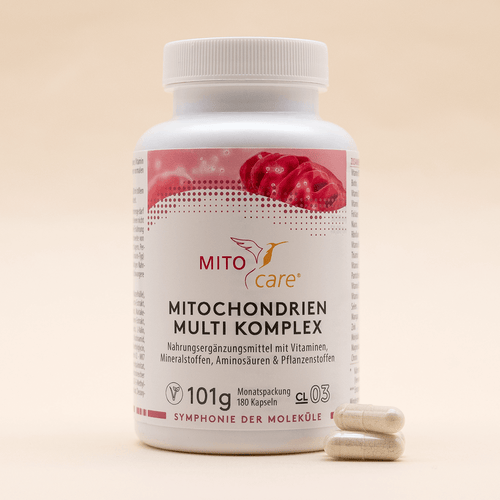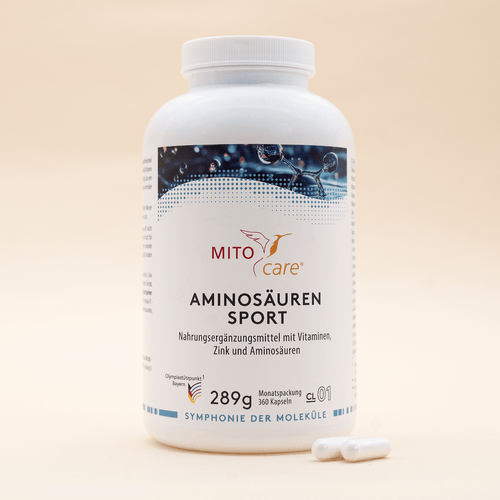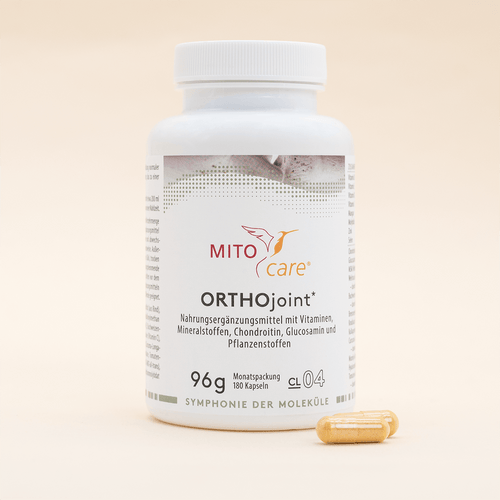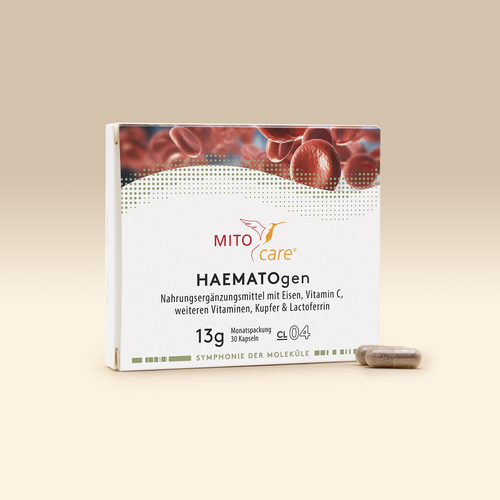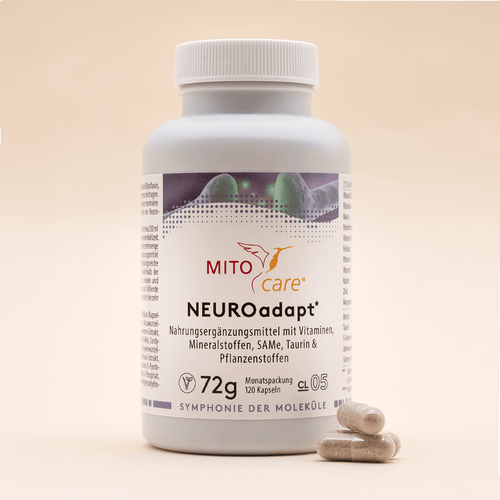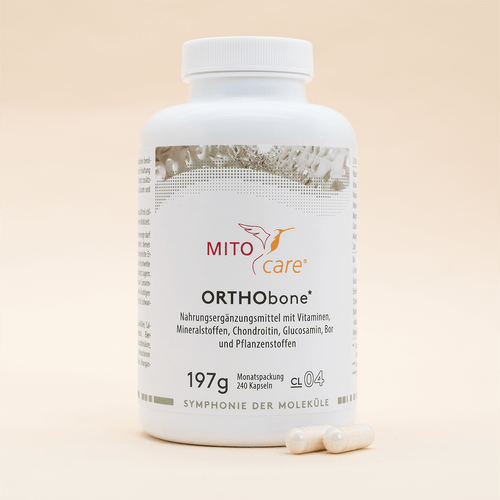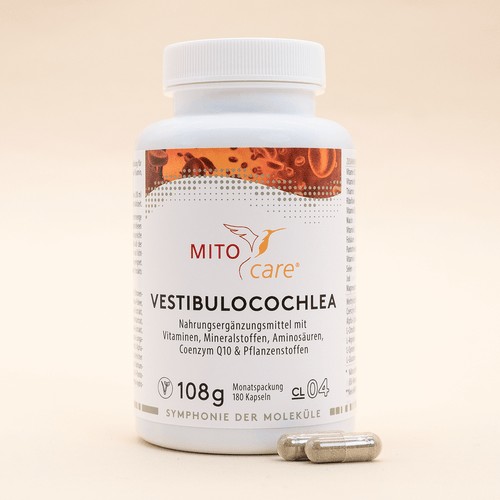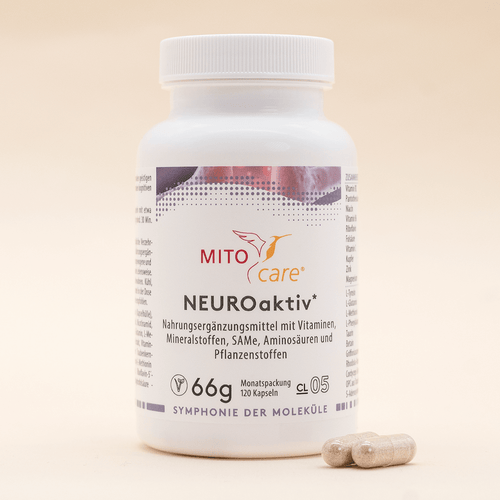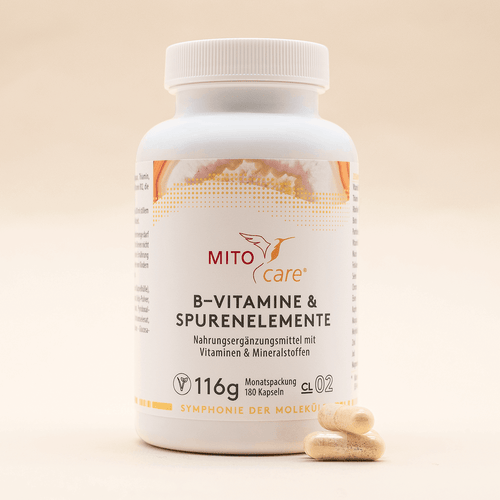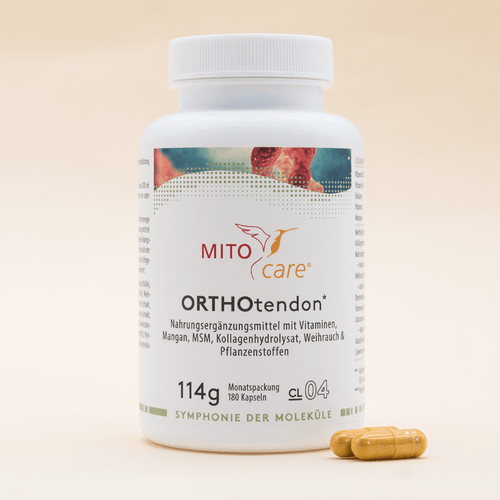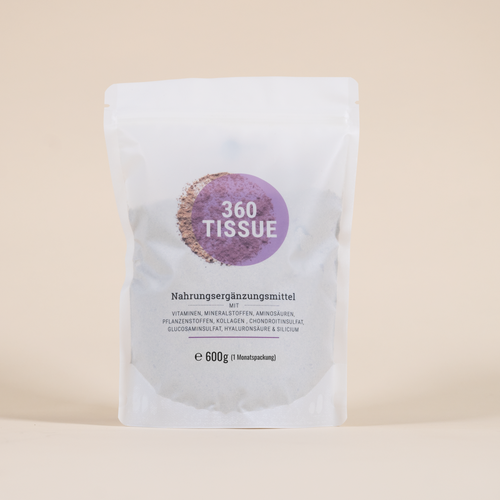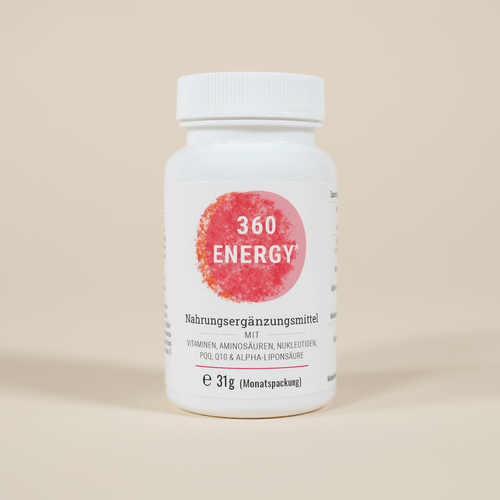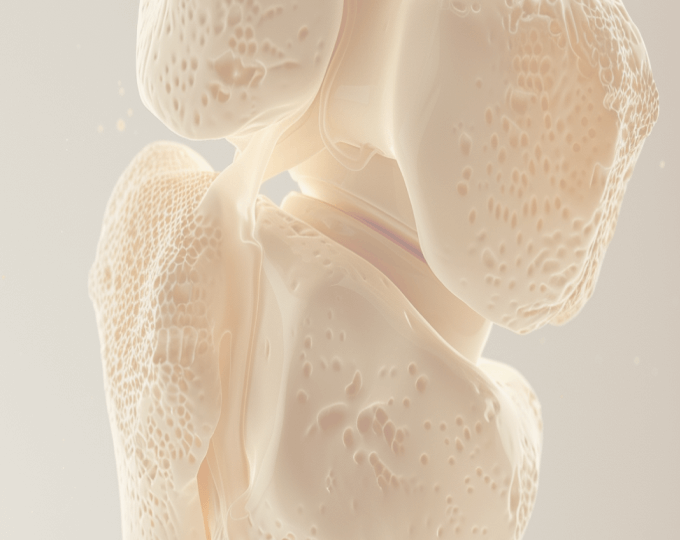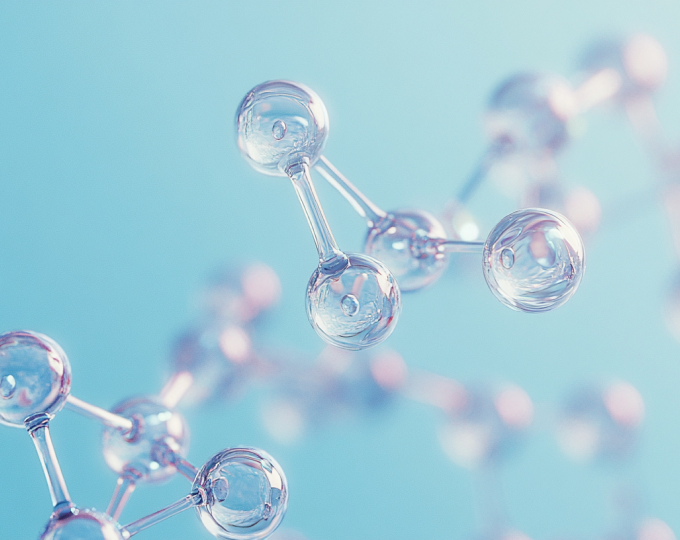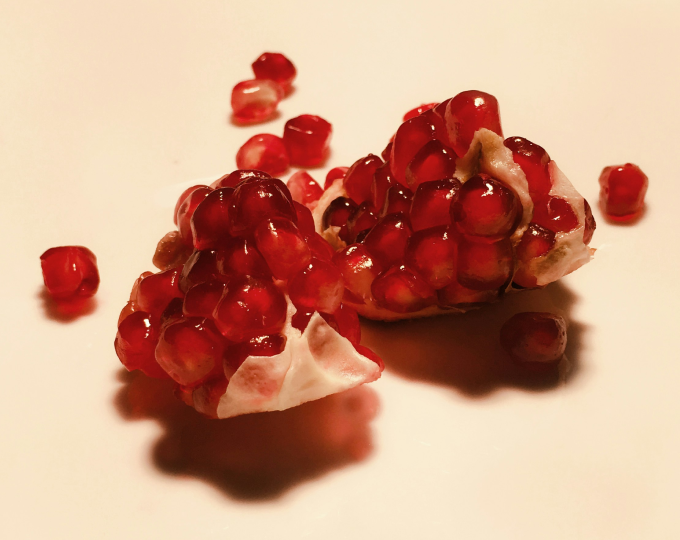Themen dieses Blogartikels:
Table of contents
- Definition: What is Glucosamine
- What functions does glucosamine have?
- Glucosamine as a drug in medicine?
- What makes glucosamine unique?
- When do you especially need glucosamine?
- What should you pay attention to when taking glucosamine?
- Glucosamine & Drug Interactions
- Which foods contain particularly high levels of glucosamine?
- supplementation of glucosamine
- Choosing the right glucosamine supplement
- Bibliography & Sources
Definition: What is Glucosamine?
Glucosamine is a derivative of glucose, more precisely D-glucose. This chemical compound is a so-called amino sugar: instead of a hydroxy group like glucose, glucosamine has an amino group on the second carbon.¹ In the human organism, glucosamine occurs naturally as a component of connective tissue, cartilage and synovial fluid.²
What functions does glucosamine have?
Glucosamine is produced by the human body itself and is part of the lubricant in the joints. The chemical compound is also a precursor to all nitrogen-containing sugar molecules.³
Advertisement
Specially developed for the musculoskeletal system
With Glucosamine, Zinc & Chondroitin
Plant complex of lycopene, frankincense, rutin from buckwheat, nettle, garlic & turmeric
Supplemented with collagen & hyaluronic acid & MSM
No fillers or flavors
Developed with doctors & experts
Free from Gluten & Lactose
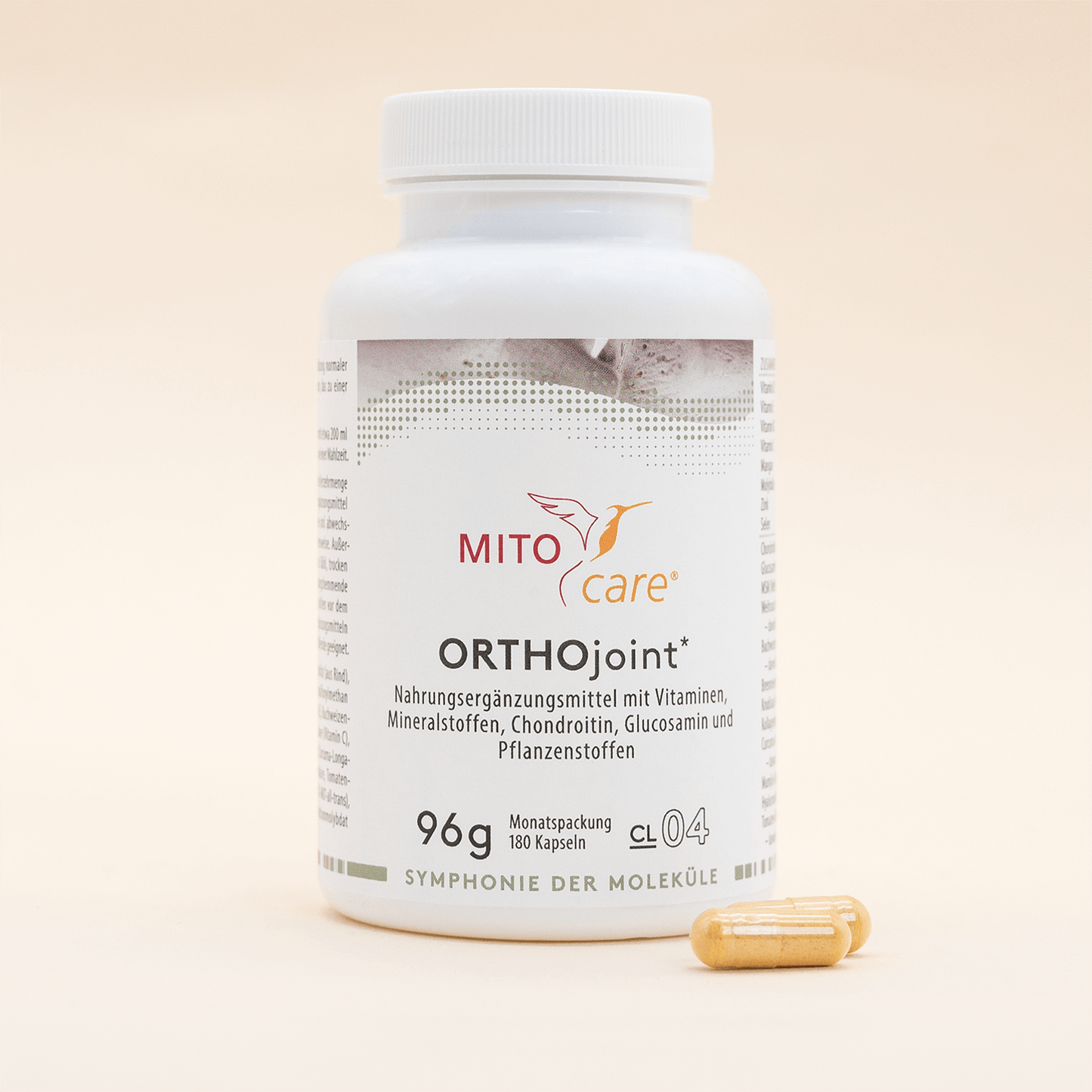
Glucosamine as a drug in medicine
Glucosamine is prescribed as a medicine to relieve stiff or swollen joints, although the exact mechanism of action is still unknown.⁴ Whether the active ingredient also has an analgesic or anti-inflammatory effect has not yet been clearly proven.⁵
What makes glucosamine unique?
The substance is being researched not only in connection with joint diseases and healthy cartilage function, but also with regard to longevity.
For example, scientists at the Swiss Federal Institute of Technology in Zurich were able to show that glucosamine extends the life expectancy of aging mice by around ten percent. The amino sugar apparently simulates a low-carbohydrate diet in mice fed with glucosamine and thus improves their blood sugar metabolism. This could also protect against diabetes mellitus.⁶ However, it is still unclear to what extent the results from the animal experiments can be transferred to humans.
When do you especially need glucosamine?
As a medicine, glucosamine is used to support degenerative diseases of the knee joint, such as mild to moderate osteoarthritis.⁷ The drug is available in the form of capsules or tablets to be taken orally, powder and as an ointment or cream to be applied.⁸ The full name of the active ingredient is 2-amino-2-deoxy-α/β-D-glucopyranose.⁹ Glucosamine is usually used in the form of glucosamine sulfate, glucosamine hydrochloride or N-acetylglucosamine.¹⁰ In addition, dietary supplements containing glucosamine are available, the intake of which is below the medicinal dosage. Here, glucosamine is often used in combination with chondroitin, which is converted into glucosamine and glucuronic acid in the digestive tract.¹¹
What should you pay attention to when taking glucosamine?
In general, taking glucosamine is considered safe. However, side effects can occur, especially gastrointestinal complaints such as nausea, diarrhea and abdominal pain.¹² Since the glucosamine used in dietary supplements is usually obtained from crustaceans such as crabs or shrimp, you should avoid taking it if you are allergic to shellfish. And people with diabetes should also be careful, as glucosamine is chemically similar to glucose and can affect blood sugar levels.¹³
Glucosamine & Drug Interactions
If you have to take coumarin anticoagulants as anticoagulants, unwanted interactions can occur: Glucosamine, for example, carries the risk of increasing the anticoagulant effect of the medication, which can lead to bleeding.¹⁴ Due to a lack of data, it is not known how glucosamine should be assessed for children, adolescents, pregnant women or breastfeeding women. The Federal Institute for Risk Assessment (BfR) therefore advises these groups of people not to take it.¹⁵
Which foods contain particularly high levels of glucosamine?
Glucosamine is found in marine animals such as crabs, mussels, shrimps and lobsters. But it can also be obtained from the chitin of insects such as silkworms and from certain fungi.
supplementation of glucosamine
Since the amounts in the normal diet are often insufficient, many people decide to supplement glucosamine. It is important to pay attention to the quality of the products, as not all supplements are the same. Some contain additives or inferior ingredients that could reduce their effectiveness.
Choosing the right glucosamine supplement
When choosing a glucosamine preparation, you should pay attention to the origin and purity of the ingredients. High-quality products do not contain unnecessary additives such as artificial colors, preservatives or fillers, which are often contained in cheaper versions. Bioavailability also plays an important role: Glucosamine in an easily absorbable form can be used more efficiently by the body.
This encyclopedia entry is based on carefully researched sources:
Bibliography & Sources
- flexikon.doccheck.com/de/Glucosamine
- bfr.bund.de/de/a-z_index/glucosamine-10083.html
- chemie.de/lexikon/Glucosamine.html
- msdmanuals.com/de/profi/special-specialties/food-supplements/glucosamine
- spektrum.de/news/glucosamine-was-helps-against-joint-pain/1865137
- ethz.ch/de/news-and-events/eth-news/news/2014/04/glukosamin-erhoeht-lebenserwaltung.html
- yellow-list.de/wirkstoffe/Glucosamine-hydrochloride_49856
- msdmanuals.com/de/heim/special-topics/food-supplements-and-vitamins/glucosamine
- flexikon.doccheck.com/de/Glucosamine
- bfr.bund.de/de/a-z_index/glucosamine-10083.html
- consumerzentrale.de/wissen/lebensmittel/futterrgaenzsmittel/glucosamine-und-chondroitin-hilfe-bei-Joint-complaints-13573
- vitalstoff-lexikon.de/Weitere-Vitalstoffe/Glucosaminesulfat/Side effects
- consumerzentrale.de/wissen/lebensmittel/futterrgaenzsmittel/glucosamine-und-chondroitin-hilfe-bei-Joint-complaints-13573
- bfr.bund.de/de/presseinformation/2012/07/glucosamine_in_futtersergaenzmitteln__riskant_auch_fuer_patienten__die_coumarin_antikoagulanzien_eingehen-128853.html
- bfr.bund.de/de/a-z_index/glucosamine-10083.html


